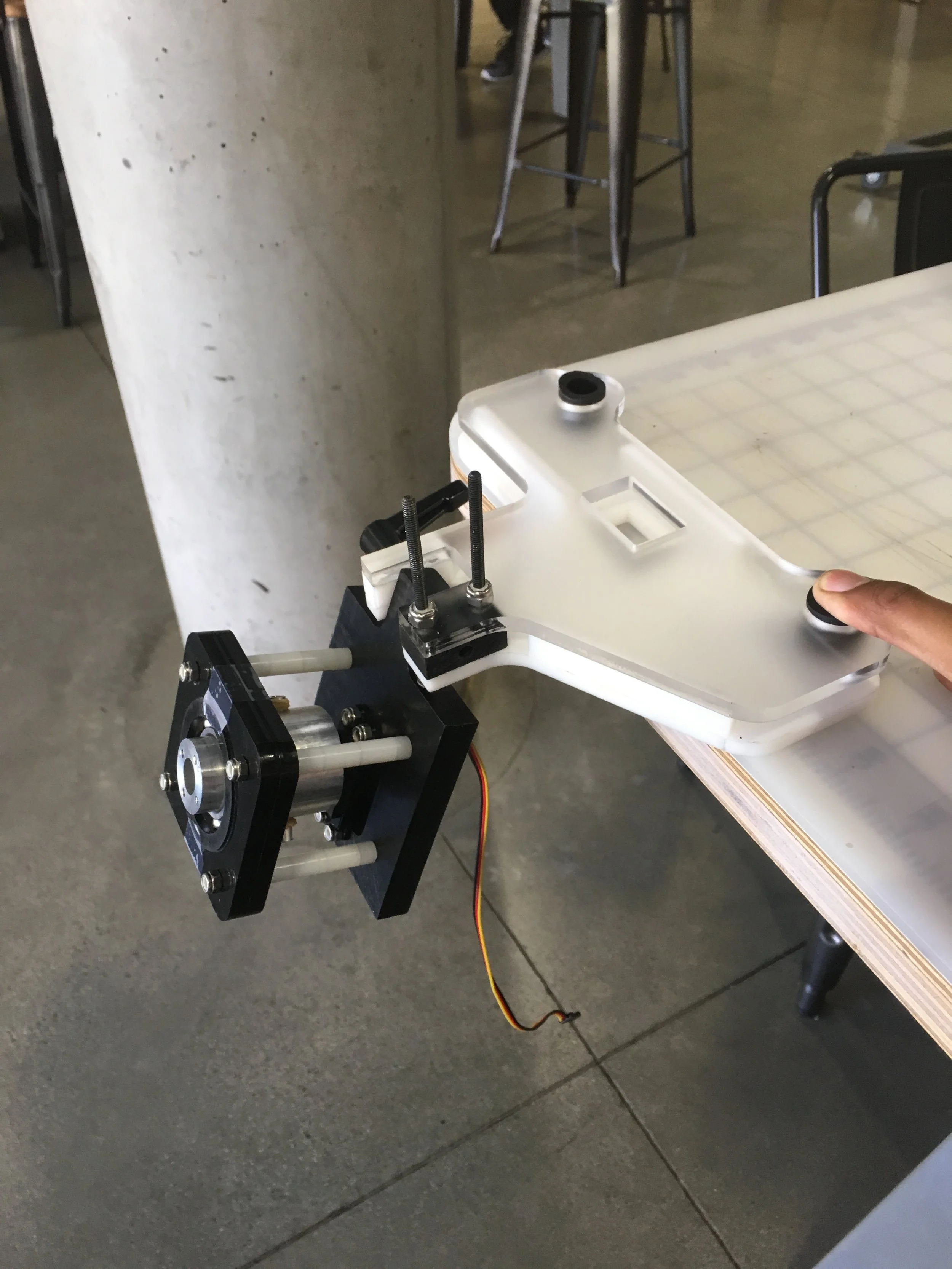Mechanical Engineering Design: ProMotion
"be productive in a moving vehicle without feeling motion sickness"
Project Abstract
Faurecia, a leading automotive parts manufacturer, has been designing interior components for major automakers for years. Many of their recent vehicle interior innovations revolve around reimagining the seating experience to improve the health and comfort of passengers. In their quest for an improved vehicle experience, Faurecia challenged us to mitigate a widespread point of discomfort in the vehicle experience: motion sickness.
Motion sickness affects one third of the population and is commonly thought to arise from a disconnect between the movement that a person feels in their inner ear from the car’s motion and the immediate, stationary interior a person perceives with their eyes. The symptoms of dizziness, nausea, and headaches can be crippling, preventing passengers from performing other tasks during a journey. With the inevitable rise of driverless cars, the interior experience will change such that all passengers will have more free time to perform any number of desired tasks; however, motion sickness remains a limiting factor to this productivity. With the aid of our coaching team and our sponsor, Faurecia, we formalize our project objective as follows:
Objective: To create an in-car product that will reduce motion sickness for back seat passengers in driverless and conventional cars who are consuming screen based content.
ProMotion is a hardware and software product that aims to allow passengers in driverless and conventional vehicles to remain productive through all stages of a journey. Its hardware design centers around an adaptive display which responds to the motions of a cornering vehicle. This responsiveness is designed to induce a head tilt in the user while they continue to read or work on the screen. This moderate head tilt (approximately ±25°) has been shown by Japanese researchers at Ritsumeikan University to mitigate the effects of motion sickness. ProMotion combines the adaptive display rotation with a simulated transparency effect. By overlaying a videofeed streamed from a front-facing camera with a slightly transparent version of the user’s content (e.g. text, design, or video), we allow the passenger to see what is happening in front of the car while working and without requiring them to readjust their vision or move their head around to get a better look at their surroundings. The tilt of the ProMotion screen is adjusted based on filtered accelerometer data from an Arduino Micro microcontroller combined with an Adafruit accelerometer. The electronics then send a signal to a high power HiTec servo which, through our custom designed mount, allows the display, mounted to the back of a front seat headrest, to rotate to a specified angle during cornering. We chose this mounting location after realizing, through interviews with the public, that the back seat experience was one which almost universally elicited the strongest feelings of motion sickness. From our user testing, we found that the rotation of the screen cued users to accordingly tilt their head and, on average, resulted in lower symptoms of motion sickness. The transparency effect was less well-received, with some users enjoying it and others finding it distracting.
Design Overview
The ProMotion rotating display was designed with the productive passenger in mind. The most important goal of our design was to reduce the possibility of provoking and/or the severity of motion sickness in the passenger via our mechanism. We aimed to accomplish this through 1) making the user more visually aware of the car’s movement and 2) mitigating the negative effects that turns have on the inner ear’s equilibrium.
To achieve the former goal, we used using a third party software Peek Through created by LukePayneSoftware which overlaid a transparent version of the user’s content over live video feed showing the moving road ahead of them. In effect, this allowed the user to simultaneously look at the text they were reading and be visually aware of the moving road ahead of them. During our first round of prototyping using a transparent acrylic panel (see Figure 2.1), passengers reported being able to both focus on content they were reading as well as be persistently aware of their surroundings. This ability to instantaneously switch the eye’s plane of focus was something we tried to replicate in our final design.
To achieve the second goal of rotation, we designed a rotating monitor display mount that tilts in the direction that the car turns and cues the viewer to similarly tilt their head. This decision to actively rotate the screen meant that our design needed to accurately rotate the screen in the plane of vision of the passenger. In executing its purpose, we wanted our design to be easy to integrate with the seat back environment. This meant a design that was low profile, comfortable to use for the backseat passengers, and did not encroach on the space of the front seat passenger/driver. We therefore designed a self-contained assembly that rotated the screen via a high torque servo.
Video
The short video below shows ProMotion functioning in a car environment. The first clip shows the product with the adaptive display turned off. Here we note that the test users did not tilt their head and experienced the highest levels of motion sickness symptoms (via a 5 point motion sickness scale). When ProMotion was engaged, the display reacts to the lateral motion of the cornering vehicle. We found that the majority of users (91% of the time) titled their head with ProMotion thus accomplishing a primary goal of our product. In addition to this, test users reported lower levels of motion sickness symptoms (via the same 5 points scale). You can watch a selection of our tests below...





